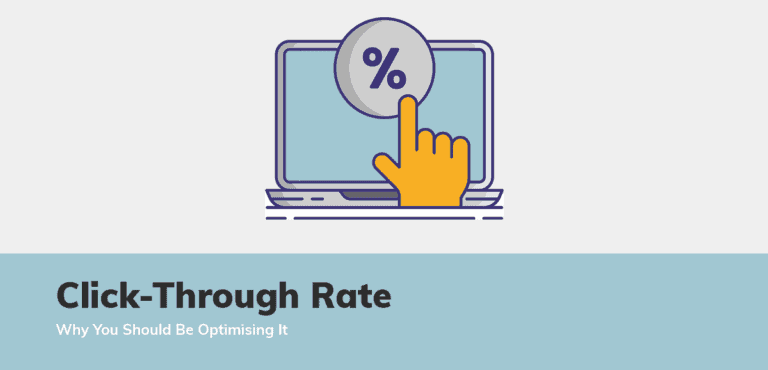If your website is pretty established, and you have keywords on the first page of Google, CTR optimisation is probably one of the best things you can do.
Why?
When done proper, CTR optimisation is a quick win to boost up your keyword rankings higher in the search engines.
First of all, what is CTR?
A click-through rate is basically the number of people who click on a link relative to the number of people who saw it.
Basically, the calculation for CTR is
CTR = (clicks/impressions) x 100
Why CTR matters
Well, the most obvious reason to why CTR matters is that you’ll get higher clicks to your website. And since you’re doing SEO, you should be looking into increasing your website traffic on top of getting your keywords to the first page of Google.
In the document leaked during the US Congress’ investigation of Google, it mentioned that Google uses “user signals, like clicks” when determining your ranking position.
This means that if you’re getting more clicks than your competitors, your content is theoretically better than your competitors. Therefore, it should be placed higher than theirs in the SERPs.
The reason why I mentioned it’s theoretical is that, well, your content might not be better than your competitors. If you’re using clickbait-type headlines and meta descriptions, and your content doesn’t deliver what it promises, it’s not better despite getting more clicks to it.
This will cause searchers to pogo stick and you’ll see a negative result instead.
Pogo sticking
Pogo sticking is the act of jumping from one search result to another. This usually happens when users don’t find the answer they’re looking for on the first position, and pogo sticks to other results in the SERPs.
Think of it this way.
You’re looking for the best vegan food in Singapore.
However, the first result in the SERPs talks about the best vegetarian food in Singapore despite putting “Best Vegan Food in Singapore” in the meta titles and meta description.
As these are not the same, it does not fulfil the search intent and the user will not be satisfied with the content in your page.
As a user, chances are you’ll leave that page and pogo stick to other websites until you find one that actually talks about vegan food.
Why is pogo-sticking bad?
Pogo-sticking is bad because it tells search engines that your website is not relevant to the search query, and users don’t like what they see.
Even though you get higher CTRs that pushes your rankings up, your results will be shortlived when users deem your content as irrelevant to the search query.
Your rankings will then drop as a result of this.
So what should you do?
So we all know that CTRs are a quick win to boost your rankings when you’re already on the first page.
But pogo-sticking will cause your rankings to suffer. Therefore, here’s what I recommend:
- Make sure that your article answers the search intent. Search intent is important and plays a major role in SEO.
- Make sure your article is better than your competitors. By better, I mean in terms of the information you provide, how unique it is, and whether the user is satisfied just from reading your article.
- If you’re already in the first page (preferably top 5), you can then conduct CTR optimisation on your title tags and meta descriptions.
How do I optimise my CTRs?
One way of doing it is to observe what your competitors are doing. They’re above you in the SERPs for a reason.
If they include the keyword, you include the keyword.
If they have numbers, you include numbers.
If they include the year, you include the year.
If they have modifiers, you include modifiers.
You get what I mean.
However, what you want to avoid is copying your competitors’ title tags and meta description. You should instead observe, analyse, and improve yours.
So if their title tag is “Top 5 Vegan Food in Singapore”, you write “The 7 Best Vegan Food in Singapore: 2020”.
And in your meta description, write a compelling reason to why your article is better than your competitors. Include a CTA if you can afford the character count.
Telling the searcher to click on your article pushes them to take action after they’re hooked by your awesome meta description.
How do I know if my changes are effective?
Good question. You’ll have to measure your CTRs after the change and compare it to your previous CTRs. You’ll also have to make sure that your comparison is fair and is of statistical significance.
That’s why many recommend A/B testing as it provides data-based decisions, not observational decisions. Without A/B testing, you wouldn’t know which version generates higher CTRs. If you’re not doing A/B testing, you risk having your original copy generating higher CTRs than your updated version.
And this will reduce your overall ranking position.
Conclusion
CTR optimisation, if done right, will definitely produce higher rankings and more traffic to your website. And these results will come fast.
However, if you’re not careful with your decisions, you might see a negative effect instead.
Therefore, before making any decisions (especially if you’re already on the first page), always be testing accurately. Without accurate testing, you put your business at risk of losing potential customers!
Liked this post? Join my Telegram Channel where I share even more SEO tips that I don’t put on my blog!




